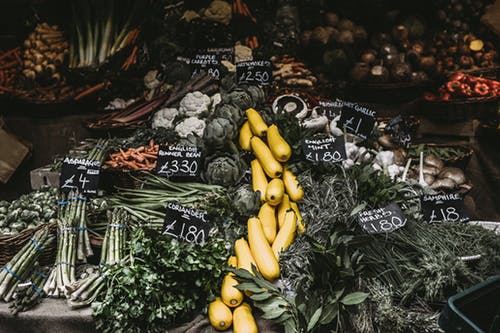Posted: Sep 03, 2019

Your food waste footprint is bigger than you think. Here’s how to minimize your climate impact. (And, no, composting is not the answer.)
Mindful eating is all the rage lately. People are paying attention to the flavors of their food and being careful to stop when they feel full. But few are thinking about the food they don’t eat — what gets scraped into the garbage can or compost bin at the end of dinner, or goes bad in the fridge before it ever sees a plate.
Food waste is one of the most overlooked contributors to the climate crisis, according to a report released Thursday by the World Resources Institute, a research nonprofit. Nearly a third of all the food produced in the world is lost or wasted each year, accounting for an estimated 8% of annual greenhouse gas emissions. A quarter of all water used by agriculture goes to producing food that never gets eaten, and growing that never-to-be-eaten food requires an agricultural area the size of China. What’s more, the report warns, if we don’t get a handle on the situation, we’ll have to convert an Argentina’s worth of natural land into farms over the next three decades in order to meet the world’s food demands.
But we can avoid that, the authors submit, if we cut the amount of food we waste in half by the year 2030. “Halving food loss and waste by 2030 is critical if we’re to feed the world without destroying the planet,” said WRI head Andrew Steer.
The report lays out how governments, corporations, retailers, farmers and consumers can all do their part to meet this goal, originally set by the United Nations in 2015. For those of us eating three square meals a day in North America and Europe, that means — in the simplest terms — not throwing away so much food.
Food loss looks different at different parts of the supply chain and in different parts of the world. A third of the 1.3 billion tons of food lost each year happens in developing countries, where farmers struggle to get their products to market before they spoil, due to problems such as lack of refrigeration and bad roads. Just as much is wasted by consumers in wealthy countries who don’t finish their leftovers. (The rest can be attributed to issues in processing, packaging, and distributing food.)
Nearly 60% of food waste in North America, and more than 40% in Europe, is caused by consumers. It typically comes down to two main issues, Liz Goodwin, WRI senior fellow and director of food loss and waste, told HuffPost: We buy too much food, and we don’t use it in time.
By Amanda Schupak
August 29, 2019
Source and complete article: Huffpost.com
Go-Wine's mission is to organize food and beverage information and make it universally accessible and beneficial. These are the benefits of sharing your article in Go-Wine.com